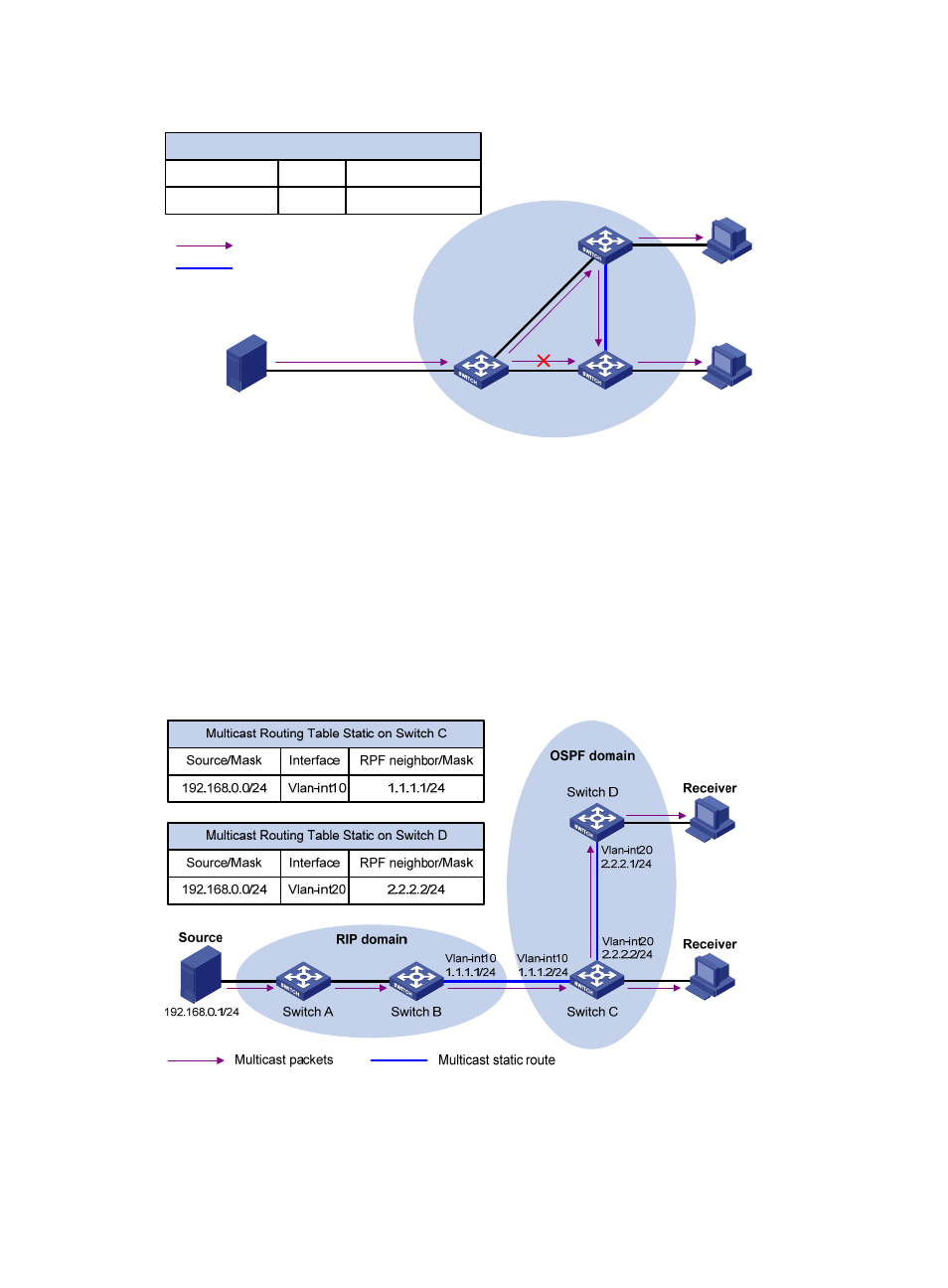Creating an rpf route – H3C Technologies H3C S12500-X Series Switches User Manual
Page 48

38
Figure 16 Changing an RPF route
As shown in
, when no static multicast route is configured, Switch C's RPF neighbor on the path
back to the source is Switch A, and the multicast data from the source travels through Switch A to Switch
C. When a static multicast route is configured on Switch C with Switch B as its RPF neighbor on the path
back to the source, the multicast data from the source travels along the path: Switch A to Switch B and
then to Switch C.
Creating an RPF route
When a unicast route is blocked, multicast forwarding might be stopped due to lack of an RPF route. In
this case, you can create an RPF route by configuring a static multicast route for a given multicast source,
so that a multicast routing entry is created to guide multicast forwarding.
Figure 17 Creating an RPF route
As shown in
, the RIP domain and the OSPF domain are unicast isolated from each other. When
no static multicast route is configured, the receiver hosts in the OSPF domain cannot receive the multicast
packets from the multicast source in the RIP domain. If you configure a static multicast route on Switch C
Receiver
Switch A
Switch B
Switch C
Vlan-int20
Vlan-int10
1.1.1.1/24
Multicast packets
Source
192.168.0.1/24
Receiver
Vlan-int10
1.1.1.2/24
Multicast static route
Source/Mask
Multicast Routing Table Static on Switch C
192.168.0.0/24
Interface
Vlan-int10
RPF neighbor/Mask
1.1.1.1/24
- H3C S9800 Series Switches H3C S5560 Series Switches H3C S5130 Series Switches H3C S5120 Series Switches H3C S12500 Series Switches H3C SR8800 H3C SR6600-X H3C SR6600 H3C WX6000 Series Access Controllers H3C WX5000 Series Access Controllers H3C WX3000 Series Unified Switches H3C LSWM1WCM10 Access Controller Module H3C LSWM1WCM20 Access Controller Module H3C LSQM1WCMB0 Access Controller Module H3C LSRM1WCM2A1 Access Controller Module H3C LSBM1WCM2A0 Access Controller Module
